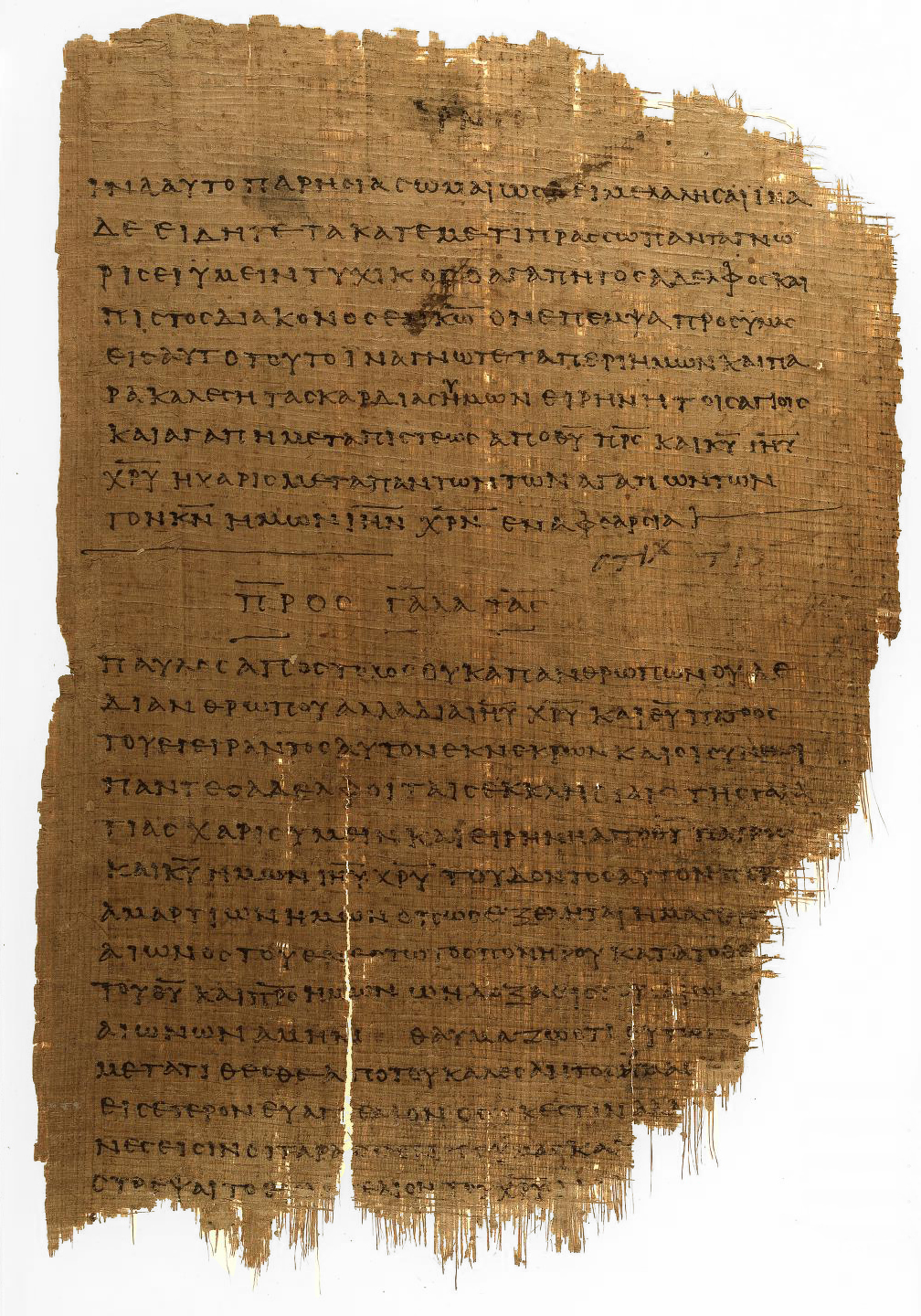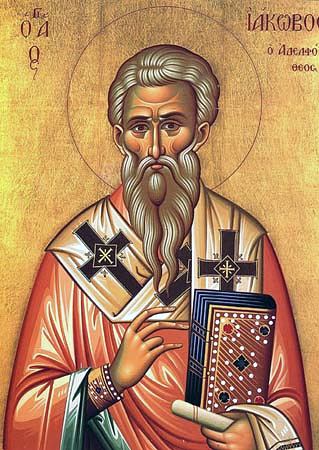|
Epistle To The Galatians
The Epistle to the Galatians is the ninth book of the New Testament. It is a letter from Paul the Apostle to a number of Early Christian communities in Galatia. Scholars have suggested that this is either the Galatia (Roman province), Roman province of Galatia in southern Early centers of Christianity#Asia Minor, Anatolia, or a large region defined by ''Galatians (people), Galatians,'' an ethnic group of Celtic people in central Anatolia. The letter was originally written in Koine Greek and later translated into other languages. In this letter, Paul is principally concerned with the controversy surrounding Gentile Christians and the Law of Moses, Mosaic Law during the Apostolic Age. Paul argues that the Gentile Galatians do not need to adhere to the tenets of the Mosaic Law, particularly religious male circumcision, by contextualizing the role of the law in light of the revelation of Christ. The Epistle to the Galatians has exerted enormous influence on the history of Christiani ... [...More Info...] [...Related Items...] OR: [Wikipedia] [Google] [Baidu] |
Bruce Metzger
Bruce Manning Metzger (February 9, 1914 – February 13, 2007) was an American biblical scholar, Bible translator and textual critic who was a longtime professor at Princeton Theological Seminary and Bible editor who served on the board of the American Bible Society and United Bible Societies. He was a scholar of Greek, New Testament, and New Testament textual criticism, and wrote prolifically on these subjects. Metzger was an influential New Testament scholar of the 20th century. He was elected to the American Philosophical Society in 1986. Biography Metzger was born on February 9, 1914, in Middletown, Pennsylvania, and earned his BA (1935) at Lebanon Valley College. Metzger had strong academic training in Greek before enrolling in Princeton Seminary, and in the summer prior to entering the Seminary, he completed reading through the entire Bible consecutively for the twelfth time. He received his ThB in 1938 at Princeton Theological Seminary, and in the autumn of 1938 ... [...More Info...] [...Related Items...] OR: [Wikipedia] [Google] [Baidu] |
Council Of Jerusalem
The Council of Jerusalem or Apostolic Council is a council described in chapter 15 of the Acts of the Apostles, held in Jerusalem . The council decided that Gentiles who converted to Christianity were not obligated to keep most of the rules prescribed to the Jews by the Mosaic Law, such as Jewish dietary laws and other specific rituals, including the rules concerning circumcision of males. The council did, however, retain the prohibitions on eating blood or meat containing blood, and meat of animals that were strangled, and on fornication and idolatry, sometimes referred to as the Apostolic Decree. The purpose and origin of these four prohibitions is debated. Accounts of the council are found in Acts of the Apostles (chapter 15 in two different forms, the Alexandrian and Western versions) and also possibly in Paul's letter to the Galatians (chapter 2). Some scholars dispute that Galatians 2 is about the Council of Jerusalem, while others have defended this identifi ... [...More Info...] [...Related Items...] OR: [Wikipedia] [Google] [Baidu] |
Oxford University Press
Oxford University Press (OUP) is the publishing house of the University of Oxford. It is the largest university press in the world. Its first book was printed in Oxford in 1478, with the Press officially granted the legal right to print books by decree in 1586. It is the second-oldest university press after Cambridge University Press, which was founded in 1534. It is a department of the University of Oxford. It is governed by a group of 15 academics, the Delegates of the Press, appointed by the Vice Chancellor, vice-chancellor of the University of Oxford. The Delegates of the Press are led by the Secretary to the Delegates, who serves as OUP's chief executive and as its major representative on other university bodies. Oxford University Press has had a similar governance structure since the 17th century. The press is located on Walton Street, Oxford, Walton Street, Oxford, opposite Somerville College, Oxford, Somerville College, in the inner suburb of Jericho, Oxford, Jericho. ... [...More Info...] [...Related Items...] OR: [Wikipedia] [Google] [Baidu] |
Michael Coogan
Michael D. Coogan is lecturer on Hebrew Bible/Old Testament at Harvard Divinity School, Director of Publications for the Harvard Semitic Museum, editor-in-chief of Oxford Biblical Studies Online, and professor emeritus of religious studies at Stonehill College. He has also taught at Fordham University, Boston College, Wellesley College, and the University of Waterloo (Ontario). Coogan has also participated in and directed archaeological excavations in Israel, Jordan, Cyprus, and Egypt, and has lectured widely. Education and honors Coogan was raised as Roman Catholic and for 10 years was a Jesuit. He holds a doctorate in Near Eastern Languages and Literatures from Harvard University, 1971. In 2000, he received Stonehill's Distinguished Faculty Award in recognition of his scholarship and teaching. Author One of the leading biblical scholars in the United States, he is the author of ''The Old Testament: A Historical and Literary Introduction to the Hebrew Scriptures''; editor of '' ... [...More Info...] [...Related Items...] OR: [Wikipedia] [Google] [Baidu] |
Codex Claromontanus
Codex Claromontanus, symbolized by Dp, D2 or 06 (in the Biblical manuscript#Gregory-Aland, Gregory-Aland numbering), δ 1026 (Biblical manuscript#Von Soden, von Soden), is a Greek-Latin diglot uncial manuscript of the New Testament, written in an uncial hand on vellum. The Greek and Latin texts are on facing pages, thus it is a "''diglot''" manuscript, like Codex Bezae, Codex Bezae Cantabrigiensis. The Latin text is designated by ''d'' (traditional system) or by 75 in Beuron Archabbey, Beuron system. Description The codex contains the Pauline epistles on 533 leaves, . The text is written in one column per page, 21 lines per page. At least 9 different correctors worked on this codex. The fourth corrector, from the 9th century, added accents and breathings. The codex is dated Palaeography, palaeographically to the 5th or 6th century. and David C. Parker, D. C. Parker, ''An Introduction to the New Testament Manuscripts and their Texts'' (Cambridge University Press, 2008), p. 259. ... [...More Info...] [...Related Items...] OR: [Wikipedia] [Google] [Baidu] |
Codex Freerianus
Codex Freerianus, designated by I or 016 (in the Gregory-Aland numbering), α 1041 ( von Soden), also called the ''Washington Manuscript of the Pauline Epistles'', is a 5th-century manuscript in an uncial hand on vellum in Greek. It is named after Charles Lang Freer, who purchased it in Egypt. The Codex is now located in the Freer Gallery of Art at the Smithsonian Institution in Washington, with the shelf number 06.275. According to Guglielmo Cavallo, 016 comes from the Nitrian Desert. Contents : 1 Corinthians 10:29, 11:9-10. 18-19. 26-27; 12:3-4. 27-28; 14:12-13. 22.32-33; 15:3.15.27-28.38-39.49-50; 16:1-2.12-13; : 2 Corinthians 1:1.9.16-17; 2:3-4.14; 3:6-7.16-17; 4:6-7.16-17; 5:8-10.17-18; 6:6-8.16-18; 7:7-8.13-14; 8:6-7.14-17; 8:24-9:1; 9:7-8; 9:15-10:1; 10:8-10; 10:17-11:2; 11:9-10.20-21.28-29; 12:6-7.14-15; 13:1-2.10-11; : Galatians 1:1-3.11-13, 1:22-2:1, 2:8-9, 16-17, 3:6-8, 16-17, 24-28, 4:8-10, 20-23; : Ephesians 2:15-18, 3:6-8.18-20; 4:9-11, 17-19, 28-30, 5:6-1 ... [...More Info...] [...Related Items...] OR: [Wikipedia] [Google] [Baidu] |
Codex Ephraemi Rescriptus
The Codex Ephraemi Rescriptus (Paris, National Library of France, Greek 9) is a manuscript of the Greek Bible, written on parchment. It is designated by the siglum C or 04 in the Biblical manuscript#Gregory-Aland, Gregory-Aland numbering of New Testament List of New Testament uncials, manuscripts, and δ 3 (in the Biblical manuscript#Von Soden, von Soden numbering of New Testament manuscripts. It contains most of the New Testament and some Old Testament books, with sizeable portions missing. It is one of the four great uncials (these being manuscripts which originally contained the whole of both the Old and New Testaments). The manuscript is not intact: its current condition contains material from every New Testament book except Second Epistle to the Thessalonians, 2 Thessalonians and Second Epistle of John, 2 John; however, only six books of the Greek Old Testament are represented. It is not known whether 2 Thessalonians and 2 John were Development of the New Testament canon, exc ... [...More Info...] [...Related Items...] OR: [Wikipedia] [Google] [Baidu] |
Codex Alexandrinus
The Codex Alexandrinus (London, British Library, Royal MS 1. D. V-VIII) is a manuscript of the Greek Bible,The Greek Bible in this context refers to the Bible used by Greek-speaking Christians who lived in Egypt and elsewhere during the early history of Christianity. This Bible contained both the Old and New Testaments in Koine Greek. written on parchment. It is designated by the siglum A or 02 in the Gregory-Aland numbering of New Testament manuscripts, and δ 4 in the von Soden numbering of New Testament manuscripts. It contains the majority of the Greek Old Testament and the Greek New Testament. It is one of the four Great uncial codices (these being manuscripts which originally contained the whole of both the Old and New Testaments). Along with Codex Sinaiticus and Vaticanus, it is one of the earliest and most complete manuscripts of the Bible. Using the study of comparative writing styles (palaeography), it has been dated to the fifth century. It derives its name fr ... [...More Info...] [...Related Items...] OR: [Wikipedia] [Google] [Baidu] |
William B
William is a masculine given name of Germanic origin. It became popular in England after the Norman conquest in 1066,All Things William"Meaning & Origin of the Name"/ref> and remained so throughout the Middle Ages and into the modern era. It is sometimes abbreviated "Wm." Shortened familiar versions in English include Will or Wil, Wills, Willy, Willie, Bill, Billie, and Billy. A common Irish form is Liam. Scottish diminutives include Wull, Willie or Wullie (as in Oor Wullie). Female forms include Willa, Willemina, Wilma and Wilhelmina. Etymology William is related to the German given name ''Wilhelm''. Both ultimately descend from Proto-Germanic ''*Wiljahelmaz'', with a direct cognate also in the Old Norse name ''Vilhjalmr'' and a West Germanic borrowing into Medieval Latin ''Willelmus''. The Proto-Germanic name is a compound of *''wiljô'' "will, wish, desire" and *''helmaz'' "helm, helmet".Hanks, Hardcastle and Hodges, ''Oxford Dictionary of First Names'', Oxfor ... [...More Info...] [...Related Items...] OR: [Wikipedia] [Google] [Baidu] |
Uncial 0176
Uncial 0176 (in the Gregory-Aland numbering), is a Greek uncial manuscript of the New Testament, dated paleographically to the 4th century (or 5th). Description The codex contains a small part of the Epistle to the Galatians (3:16-25), on one parchment leaf (12 cm by 7 cm). It is written in one column per page, 22 lines per page, in a small uncial letters. The Greek text of this codex is Byzantine, but Aland placed it in Category III. Currently it is dated by the INTF to the 4th or 5th century. It was examined by Guglielmo Cavallo.G. Cavallo, ''Richerche sulla maiuscola biblica'', Firenze: Le Monnier 1967, p. 115. The codex currently is housed at the Laurentian Library (PSI 251) in Florence. Textual Variants * 3:18a It reads επανγελιας rather than the usual reading επαγγελιας. * 3:18b It reads κεχαριστε rather than the usual reading of κεχαρισται. * 3:22 It reads συνεκλισεν rather than the usual reading of συνεκ ... [...More Info...] [...Related Items...] OR: [Wikipedia] [Google] [Baidu] |
Papyrus 99
Papyrus 99 (Gregory-Aland), designated by 𝔓99, is an early papyrus manuscript with quotations from the Pauline epistles of the New Testament in Greek-Latin. Four leaves have survived. K. Aland, M. Welte, B. Köster, K. Junack''Kurzgefasste Liste der griechischen Handschriften des Neues Testaments'' (Berlin, New York: Walter de Gruyter, 1994), p. 16. Description This papyrus is part of the Chester Beatty collection. It is usually considered as a glossary with single words and phrases from: * Rom 1:1; * 2 Cor 1:3-6, 1:6-17, 1:20-24, 2:1-9, 2:9-5:13, 5:13-6:3, 6:3-8:13, 8:14-22, 9:2-11:8, 11:9-23, 11:26-13:11; * Gal 1:4-11, 1:18-6:15, 1:14-2:4, 2:4-3:19, 3:19-4:9; * Eph 1:4-2:21, 1:22(?), 3:8-6:24 The text is written in 1 column per page, 27-30 lines per page. It also contains a Latin lexicon and Greek grammar. Elliot calls this papyrus '... a haphazard collection of unconnected verses from the Pauline letters hatcould have been a school exercise ...'Elliot (2005), JK, '' ... [...More Info...] [...Related Items...] OR: [Wikipedia] [Google] [Baidu] |




